





Holzhauser Kellersteine 1 is not an easy to find site, as there are no signposts. Drive the B213 from Wildeshausen westwards for about 3km, then turn south towards Holzhausen. After about 620m the road turns southeast and after 140m there is a small forest on the left side. Park where the small forest ends (300m after the road turns southeast), the tomb is located about 100m across the now appearing field, maybe you can recognize the green memorial sign in a tree (see images).
The tomb is now heavily overgrown, details are therefore difficult to spot and photograph. Visible is the long, east-west oriented approximately 10 x 2 large burial chamber. Still preserved are 13 supporting stones and 5 of the original 7 capstones, which have partially slipped into the chamber.
Visited July 2018

Nature returns and swallows the tomb along with its sign
Visited July 2018

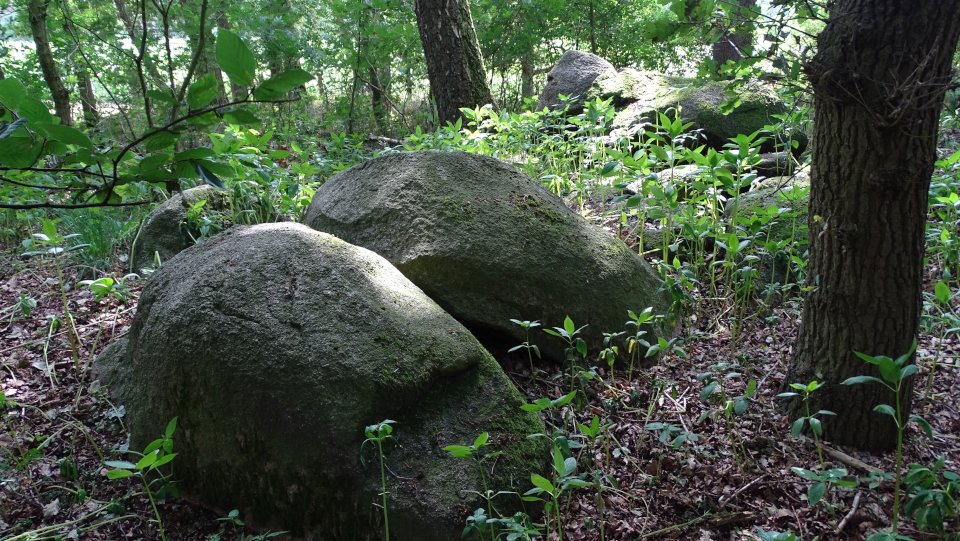


Kleinenknetener Steine 3 was located originally at the Wellohsberg, southeast of Dötlingen. When Sprockhoff examined it in 1929, it was still at its original location, but in the 1930s it had to give way to an airfield and was put up again at the Kleinenknetener Steine.
The tomb had been without capstones before the relocation. The chamber is 6 x 1 m and consists of 10 support stones.
Revisited July 2018
Kleinenknetener Steine 2 is the only known megalithic tomb in Lower Saxony with three burial chambers. Since the middle is slightly smaller than the two outer, one suspects that first the two outer grave chambers were built as separate graves, which by building another chamber in between grow together as a large hunebed. The Hunebed is oriented in northeast-southwest direction and has a length of 34 meters and is 8 meters wide.
Although the megalithic tomb looks well preserved today, numerous capstones have drilled holes.
Revisited July 2018
After the excavation work in 1936/37 Kleinenknetener Steine 1, has been restored, as it may have looked 5,000 years ago. The approximately north-south oriented passage grave has a complete enclosure (the Hunebed) and consists of 85 boulders and a covering mound, which includes 1,200 m³ of earth. It was calculated that this task could be done with 100 men at ten working hours per day in 3.5 months.
The Hunebed is 49 meters long and 7 meters wide. Almost all the stones have been preserved. In the middle, the chamber is in the same orientation as the Hunebed. The burial chamber is framed by eleven stones carrying one original and two complementary capstones.
Revisited July 2018
This is a must see site for everyone interested in Megaliths, for me Kleinenknetener Steine 1 and Kleinenknetener Steine 2 rank within the Top 3 of Megalithics sites in Germany. Kleinenknetener Steine 3 was relocated to here in the 1930 years and is not so impressive, compared to the other two sides.
The sites are located in a nice little wood between Wildeshausen and Kleinenkenten, on a minor road in the direction to Pestrup east of the road Bauerschaft Düngstrup. As the sites are part of the Straße der Megalithkultur (Route of Megalithic Culture) the site is signposted and there is a small car park beside the road. You only have to walk 150m from here to these stunning 5000 years old remains.
Revisited July 2018


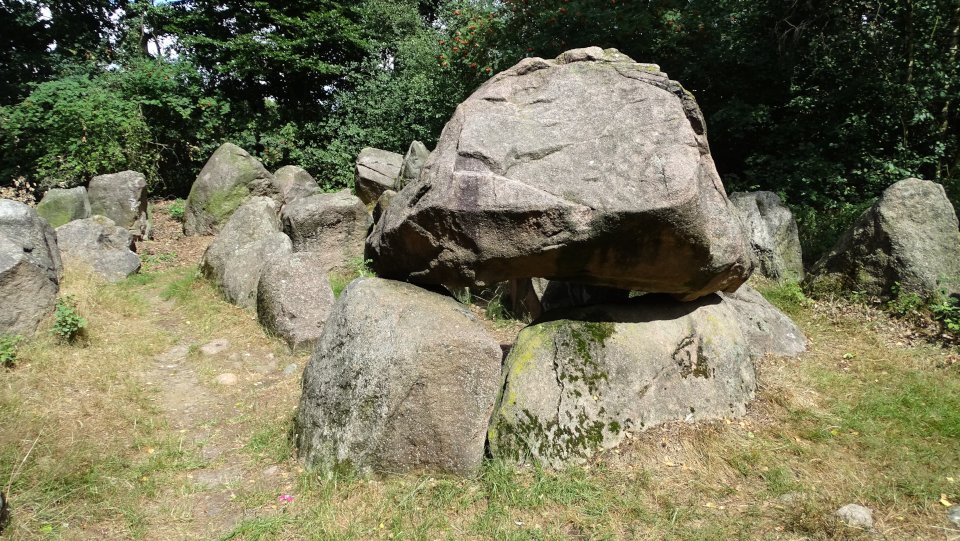
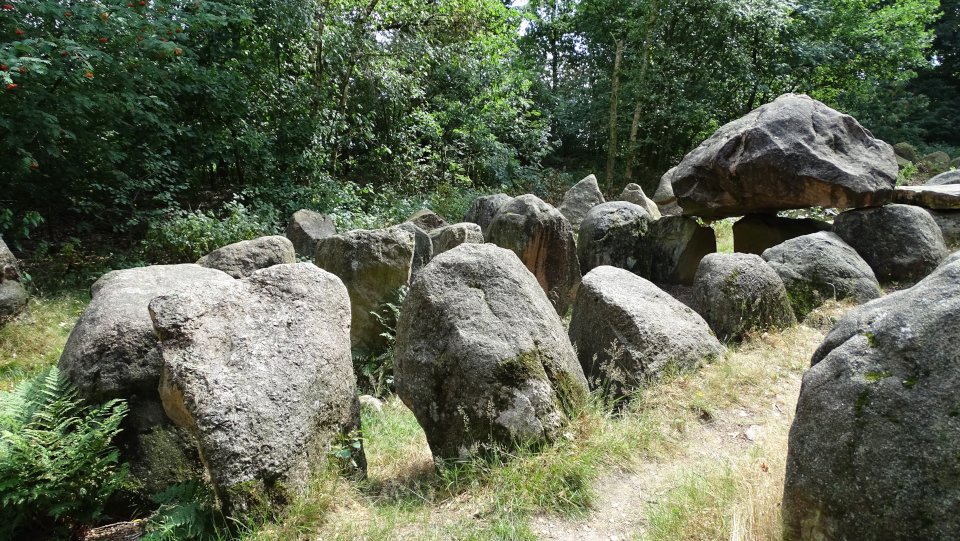




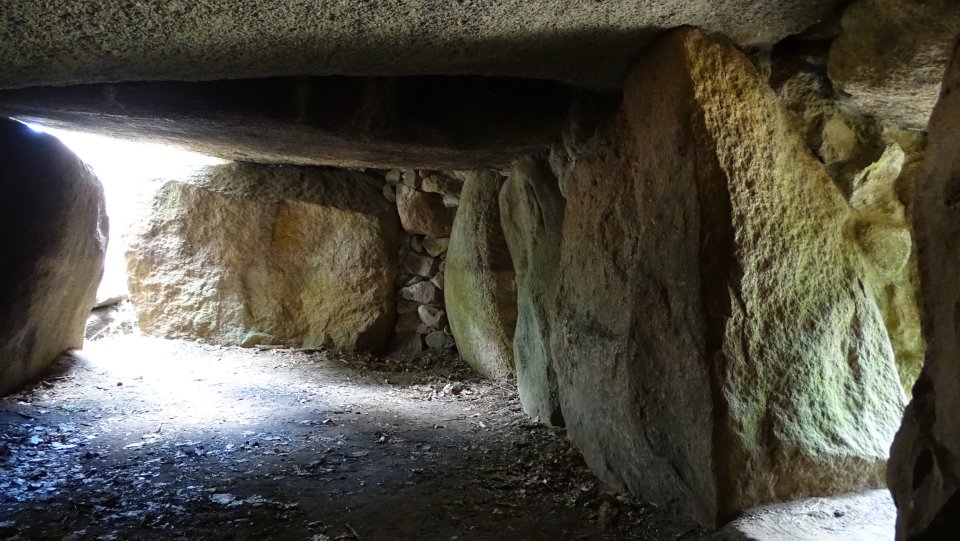


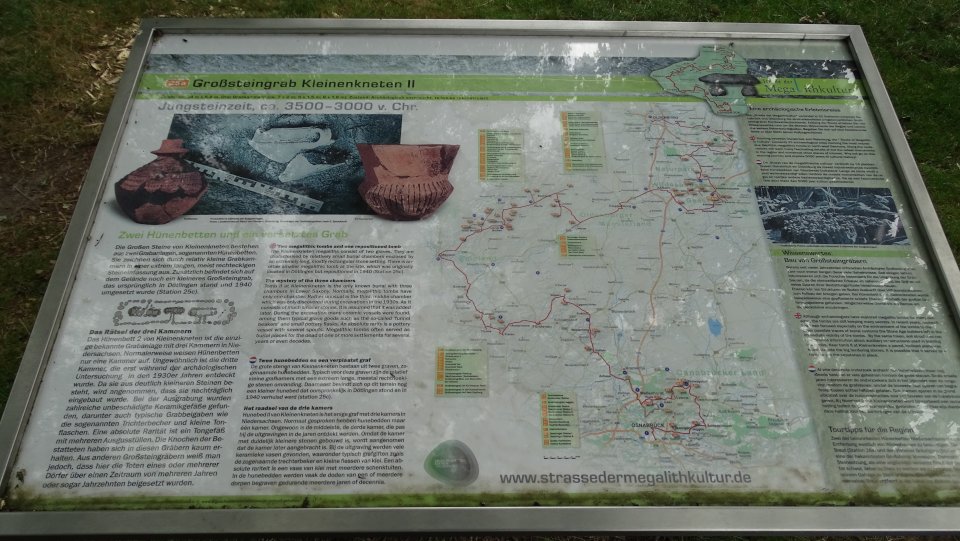

Unfortunately, there is only a very good copy of the sun stone in Beckstedt since 1955, since the sun stone is now in the Bremen Focke Museum.
The stone is about 90 cm high and 40 cm deep and consists of red granite. On it are eleven concentric circles and a central cup-shaped notch whose meaning is still unknown. Similar circular motifs can be found on stones in Ireland, Scotland and Scandinavia. The original stone was found in the early 20th century when demolishing a farmhouse in the foundation.
Visited July 2018
taken from the “Faszination Archäologie” information board:
Sonnenstein
Red granite about 90 x 40 cm
In 1921 there was a sensational discovery in Beckstedt: the discovery of one of the rare, presumably attributable to the Bronze Age “sun stones”. The special feature of the flat Beckstedter foundling consists of eleven concentrically arranged, enigmatic circles that enclose a notch in the center. So far, neither an exact dating, nor a scientifically sound interpretation of the original function of the “sun stone” could succeed.
For some time now the hypothesis exists that the incorporated motif is a sun depiction, which is why the foundling is also called the “sun stone”. Nevertheless, all previous interpretations – such as those discussed in the context of Bronze Age cult acts or pre-Christian burial customs – lack any scientific basis.
The Beckstedter “Sonnenstein is now in the Bremen Focke Museum. On site you see a copy.
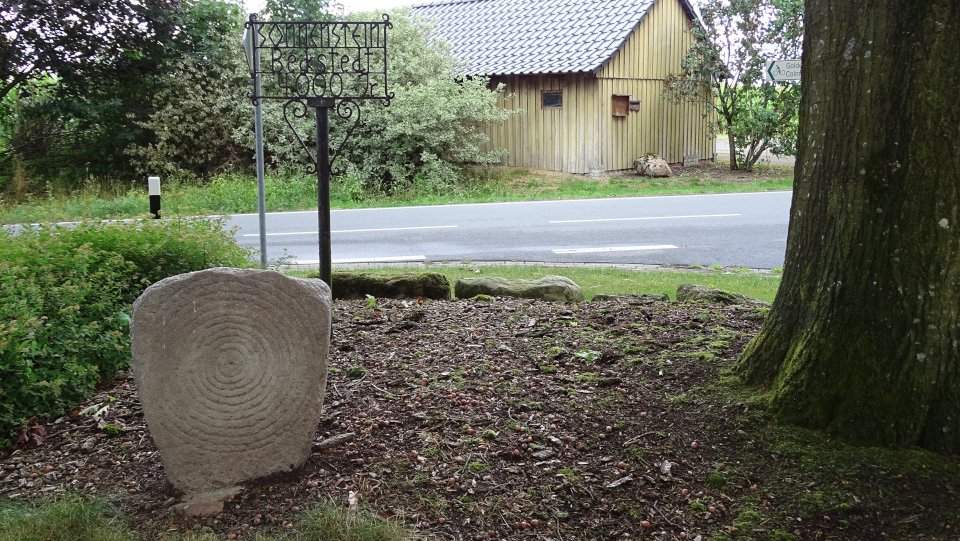
Visited July 2018

Visited July 2018

Visited July 2018
Strictly speaking, the Pestrup Burial Ground is not a megalithic site, but the largest bronze and iron age necropolis in northern Central Europe. The burial ground is part of the street of megalithic culture and is located about 2.5 km south-southeast of the Wildeshauser center and about 1 km west of the Hunte. The area is a natural and historical protected heath area of the Wildeshauser Geest Nature Park of about 35 ha (about 86 acres) with more than 530 larger and smaller Bronze and Iron Age burial mounds.
Visited July 2018






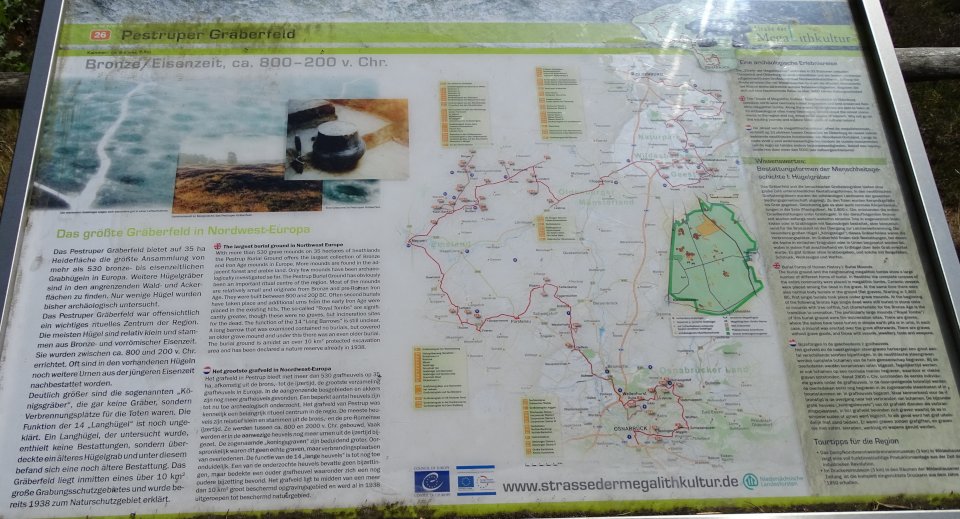
330 kilometres of scenic route lead you to 33 exciting archaeological sites through Northwest Germany. On your way you will find more than 70 Neolithic (3.500 to 2.800 B.C.) megalithic tombs.
This inconspicuous beauty is not easy to find. To reach this exemplary grave, drive from Dötlingen to Ostrittrum. About halfway up, turn left into a forest road, where the megalithic tomb is signposted. Park the car after about 600m nearly at the end of the forest and walk along a small path first east (160m), then northwards (60m) to the tomb.
A visit is highly recommended, as you can see very well here, how the small burial chamber was covered with a much larger mound. It is a well-preserved chamber oriented in a northwest-southeast direction. Two capstones are still lying on the support stones. The access was on the southwestern long side.
Visited July 2018
taken from the information board:
Megalithic tomb
Tomb of the Neolithic funnel beaker culture (about 3400 – 2800 BC). Preserved is the western part of the burial chamber (18.5 x 2.5m) originally under a mound with cap stones, supporting stones, an entrance on the south side, paving and dry stone walling between the boulders.
Excavations 1956/1958 yielded a rich find material as gifts for the dead. The megalithic tombs were funeral homes for several generations of a settlement community. The tomb stands as a monument under legal protection.
Visited July 2018






